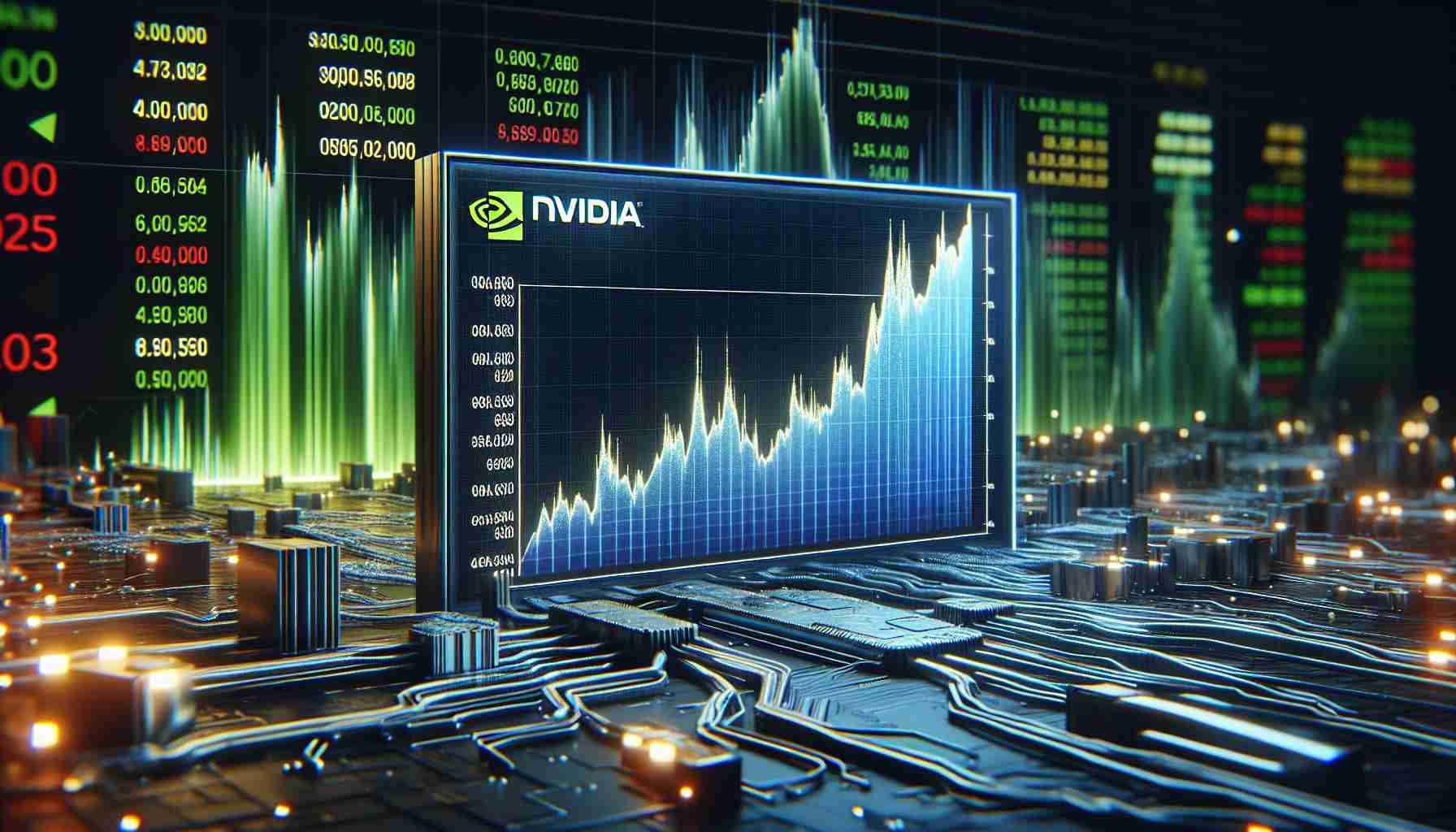NVIDIA Corporation recently experienced a significant drop in its stock prices, raising important questions about the future of its artificial intelligence investments. On Friday, shares slumped by over 3% as uncertainty grew about the necessity for extensive capital expenditure in AI technology following the emergence of China’s DeepSeek R1.
The stock plummeted by 3.58%, reaching a low of $141.88 during trading, compared to its previous closing price of $147.15. Ultimately, NVIDIA shares settled at $142.62, reflecting a 3.12% decline.
DeepSeek R1 is heralded as a new competitor to renowned models like ChatGPT and those developed by Meta, yet it operates on a far smaller budget. Backed by the Chinese quantitative fund High-Flyer, DeepSeek utilized approximately 50,000 of NVIDIA’s advanced H100 AI GPUs, which represent the last generation of cutting-edge AI technology.
DeepSeek claims that its R1 model either matches or surpasses ChatGPT, particularly in fields like mathematics and coding, while remaining considerably more cost-effective. Unlike earlier Chinese AI frameworks that mirrored U.S. models, R1 denotes a breakthrough with its hybrid structure and innovative “chain of thought” reasoning strategy that methodically tackles complex questions, akin to GPT models but with enhanced efficiency.
This latest development raises critical concerns for NVIDIA’s future in the competitive AI landscape.
The Future of AI Competition and Its Broader Implications
The recent challenges faced by NVIDIA amidst rising competition from China’s DeepSeek R1 serve as a microcosm for the broader shifts occurring within the artificial intelligence (AI) industry. As DeepSeek positions itself as a formidable rival to established AI giants like ChatGPT, the implications extend beyond corporate profits, affecting society, culture, and the global economy at large.
The rise of cost-effective AI solutions can democratize access to powerful technologies, potentially leveling the playing field for businesses worldwide. Companies in developing nations, previously unable to invest in expensive AI systems, may now harness these advanced tools to drive innovation and productivity. This shift could result in a widening gap between tech-savvy organizations and those lagging behind, influencing job markets and economic development on a global scale.
Moreover, the capital-intensive nature of AI investments prompts concerns about environmental sustainability. The energy demands of running data centers filled with cutting-edge GPUs are significant. As competition heats up, companies might prioritize efficiency to reduce their carbon footprint, sparking industry-wide strides toward sustainable technology practices.
Looking ahead, the emergence of diverse AI frameworks suggests a future characterized by diversification in thought processes and problem-solving methodologies. As various players introduce innovative models, the collective growth of AI could inspire more nuanced applications in sectors ranging from healthcare to climate science. The long-term significance of this innovation race could redefine cultural narratives surrounding technology, ethics, and the human experience, urging a reevaluation of our relationship with these increasingly autonomous systems.
NVIDIA’s AI Future at Risk: Stock Decline Fuels Concerns Amidst Emerging Competitors
Understanding NVIDIA’s Recent Stock Decline
In recent trading sessions, NVIDIA Corporation faced a significant downturn in its stock prices, reflecting concerns over its burgeoning investments in artificial intelligence (AI). The company’s shares experienced a drop of 3.58%, landing at a low of $141.88, before closing at $142.62 on Friday. This decline comes in light of emerging competition from China’s new AI model, DeepSeek R1, raising questions about NVIDIA’s market position.
DeepSeek R1: A New Competitor
DeepSeek R1 is a novel entry in the AI landscape, positioning itself as a competitor to established models such as OpenAI’s ChatGPT and Meta’s frameworks. What sets DeepSeek apart is its operational cost efficiency and the backing of High-Flyer, a Chinese quantitative fund. The model leverages around 50,000 of NVIDIA’s H100 AI GPUs, showcasing significant processing power while operating on a smaller budget than many of its American counterparts.
Features and Innovations of DeepSeek R1
DeepSeek R1 boasts several innovative features that enhance its competitive edge:
– Hybrid Architecture: R1 employs a hybrid structure that combines various AI methodologies, setting it apart from traditional models.
– “Chain of Thought” Reasoning: This innovative reasoning strategy allows the model to handle complex problems more efficiently, simulating a more human-like approach to reasoning, particularly in mathematics and coding tasks.
– Cost-Effectiveness: By optimizing resource use, DeepSeek R1 claims to provide comparable or superior outputs to ChatGPT at a reduced operational cost.
Implications for NVIDIA’s AI Strategy
The advent of DeepSeek R1 signals potential shifts in the competitive AI landscape and raises pressing questions about NVIDIA’s future strategies:
– Increasing Capital Expenditure: As competition intensifies, NVIDIA may need to increase capital investments in R&D to maintain its market leader status.
– Pricing Pressures: The cost-effective nature of competitors like DeepSeek could force NVIDIA to reassess its pricing strategies for its AI tools and platforms.
– Innovation Focus: To stay competitive, there is a greater need for NVIDIA to innovate further, possibly exploring unique architectures or functionalities that can differentiate its offerings.
Pros and Cons of NVIDIA’s Situation
Pros:
– Leading Technology: NVIDIA’s existing technology (like the H100 GPUs) still positions it as a leader in AI hardware.
– Strong Market Presence: NVIDIA has established relationships within the tech industry, which can be leveraged for collaboration and growth.
Cons:
– Competition from Cost-Effective Models: Increased competition from models like DeepSeek may erode market share.
– Stock Volatility: The recent stock price decline reflects investor concerns, which could affect future funding and development.
Predictions and Trends in the AI Market
As the AI sector evolves, it is expected that:
– More Cost-Effective AI Solutions will emerge, allowing smaller companies to compete with established giants.
– Increased Regulation: With the rapid growth of AI technology, we can anticipate more regulatory scrutiny impacting how companies operate.
– Focus on Sustainability: AI companies may need to consider sustainable practices due to growing environmental concerns surrounding data centers and energy consumption.
Conclusion
NVIDIA’s future in the AI space could be challenged by the rise of models like DeepSeek R1, which not only match existing technologies in performance but do so at a fraction of the cost. For NVIDIA to maintain its competitive edge, it will need to innovate while also considering its capital expenditures and strategic partnerships. This dynamic landscape makes it a critical time for NVIDIA and other AI stakeholders.
For further insights on NVIDIA and artificial intelligence trends, visit NVIDIA’s official site.












